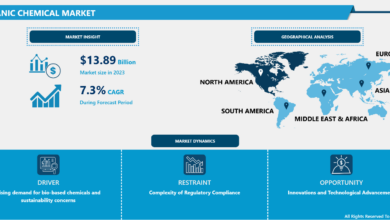PNW ‘clean hydrogen hub’ eligible for $1 billion in federal funding
(The Center Square) – Technology giant Amazon.com Inc., commercial truck manufacturer PACCAR, and the Seattle/Tacoma ports alliance are among 17 regional companies and utilities in partnership for a “clean hydrogen hub” selected by the U.S. Department of Energy for development in the Pacific Northwest.
The Pacific Northwest Hydrogen Association is a non-profit coalition of public and private partners spanning Washington, Oregon and Montana. The “PNWH2 Hub” is eligible to receive up to $1 billion in federal funding over four DOE-defined development phases spanning nine years, with $20 million allocated for Phase 1.
The hub is one of seven around the nation that will receive up to $7 billion in federal matching funds to accelerate commercial-scale development of “green hydrogen” to generate clean power, provide new forms of energy storage, and decarbonize heavy industry and transportation. They were initially announced Friday by President Joe Biden.
During an online press conference Friday afternoon, Washington Gov. Jay Inslee and others thanked the Biden administration for the selection, believing it will be hugely significant in helping the region transition from carbon-based fuels to “clean, green hydrogen” in sectors that have been hard to electrify. Inslee cited heavy-duty transportation by commercial trucks and ships, port district operations, and the agricultural and industrial sectors as examples.
According to DOE, each hydrogen hub is required to provide at least 50% for non-federal cost share dollars for a total project cost ranging from $800 million to $2.5 billion. To that end, Inslee spoke of using a share of revenues from Washington’s Climate Commitment Act, which has already raised about $1.4 billion through carbon credit auctions that began this year.
Along with the three states, project partners in the Pacific Northwest hub include Air Liquide Hydrogen Energy US LLC; Amazon.com Inc.; ALA Renewable Energy LLC; Atlas Agro; Mitsubishi Power Americas Inc.; Northwest Seaport Alliance; NovoHydrogen Development Inc.; PACCAR Inc.; Regis Solar LLC; Synchronous LLC doing business as First Mode; Twin Transit; USA Fortescue Future Industries Inc.; Williams Field Services Group LLC; Centralia College; and utility districts Portland General Electric Company, Puget Sound Energy, and Douglas County Public Utility District No. 1.
In Phase 1, they will refine plans in coming months to assure DOE that the overall hub concept and proposed projects are “technologically, financially, and legally viable” and coupled with “extensive community and labor engagement.”
Along with Inslee, participants in Friday’s press conference included U.S. Sen. Patty Murray, D-Wash.; Kent Caputo, chief operating officer of the Cowlitz Indian Tribe; April Sims, president of the Washington State Labor Council/AFL-CIO; Aaron Feaver, a clean energy technology executive; and Janine Benner, director of the Oregon Department of Energy.
Murray, Inslee and Sims all spoke of the potential to create 10,000 new, “good-paying jobs” in the Northwest as a result of hub development, with Sims calling Biden “the most pro-union president of our lifetime.”
Caputo said involvement by Indian tribes is “a big deal” in the process because they have traditionally been stewards of natural resources. “Economic development must be grounded in environmental stewardship,” he said.
Benner, vice chair of the PNWH2 board, said the transition to clean energy must be “equitable” and that both Oregon and Washington states “have been at the forefront of clean energy technology.”
According to the U.S. Department of Energy’s Hydrogen and Fuel Cell Technologies Office, electrolysis is a promising option for carbon-free hydrogen production from renewable and nuclear resources.
Electricity is used to split water into hydrogen and oxygen within a unit called an electrolyzer, which can range in size from small, appliance-size equipment to large-scale production facilities. The hydrogen can then be used in fuel cells to produce electricity as a “zero tailpipe emissions alternative fuel.”
According to DOE, drivers of light-duty fuel cell electric vehicles can fuel up at retail stations in less than five minutes and have a driving range upward of 300 miles. The proposed regional hydrogen hubs are part of research and commercial efforts to expand the currently limited hydrogen fueling infrastructure and increase production of fuel cell electric vehicles, or FCEVs.
The PNWH2 Hub is expected to take advantage of the Northwest’s “abundant clean power” – including hydroelectric generation from dams — and “innovative technology companies” to expedite this transition.
The Pacific Northwest coalition’s proposal was developed by experts from each proposed project and led by federal engineering, procurement and construction contractor Atkins. It was selected from over 79 project applications to become just one of seven hubs in the country. PNWH2 board chair Chris Green called it “an incredibly competitive proposal, backed by a great team ….”
Collectively, DOE says the hubs will have the potential to reduce 25 million metric tons of carbon dioxide emissions from end-uses each year, an amount roughly equivalent to combined annual emissions of 5.5 million gasoline-powered cars.
“The Regional Clean Hydrogen Hubs Program is one of the largest investments in Department of Energy history,” said Murray, who chairs the Senate’s Appropriations Committee.
The program is part of the Bipartisan Infrastructure Law passed by Congress and signed by President Biden. That, along with the CHIPS and Science Act and the Inflation Reduction Act, are intended to “make sure the country stays on the cutting edge of clean energy technology ….” said Murray.
In that vein, Inslee also mentioned last week’s launch event for the Blue Wind Offshore Wind Supply Chain Initiative, a campaign to establish the state as a destination for the manufacture and export of offshore floating turbine components and a partnered effort to explore offshore wind energy for Washington.


